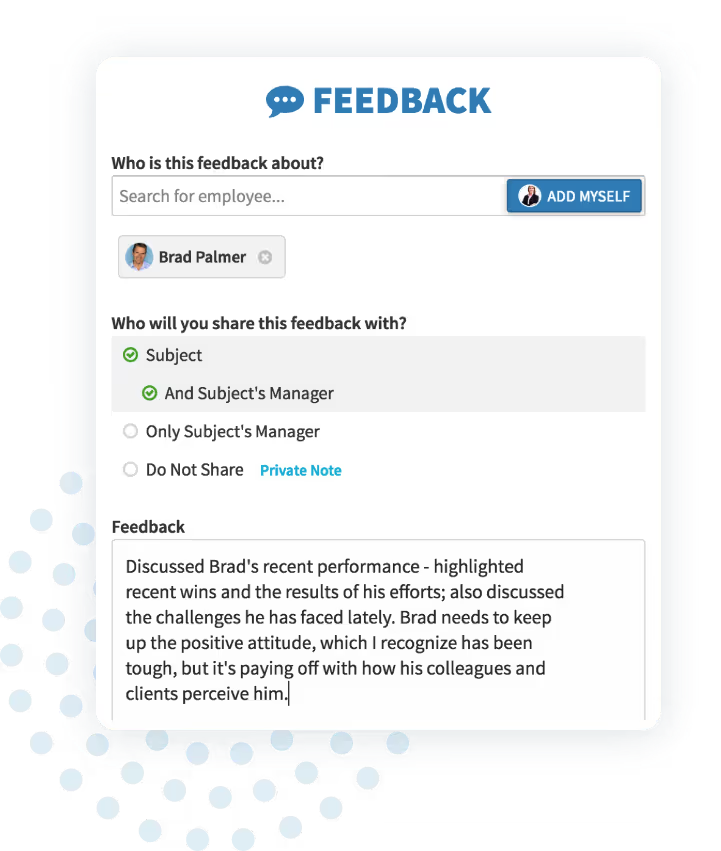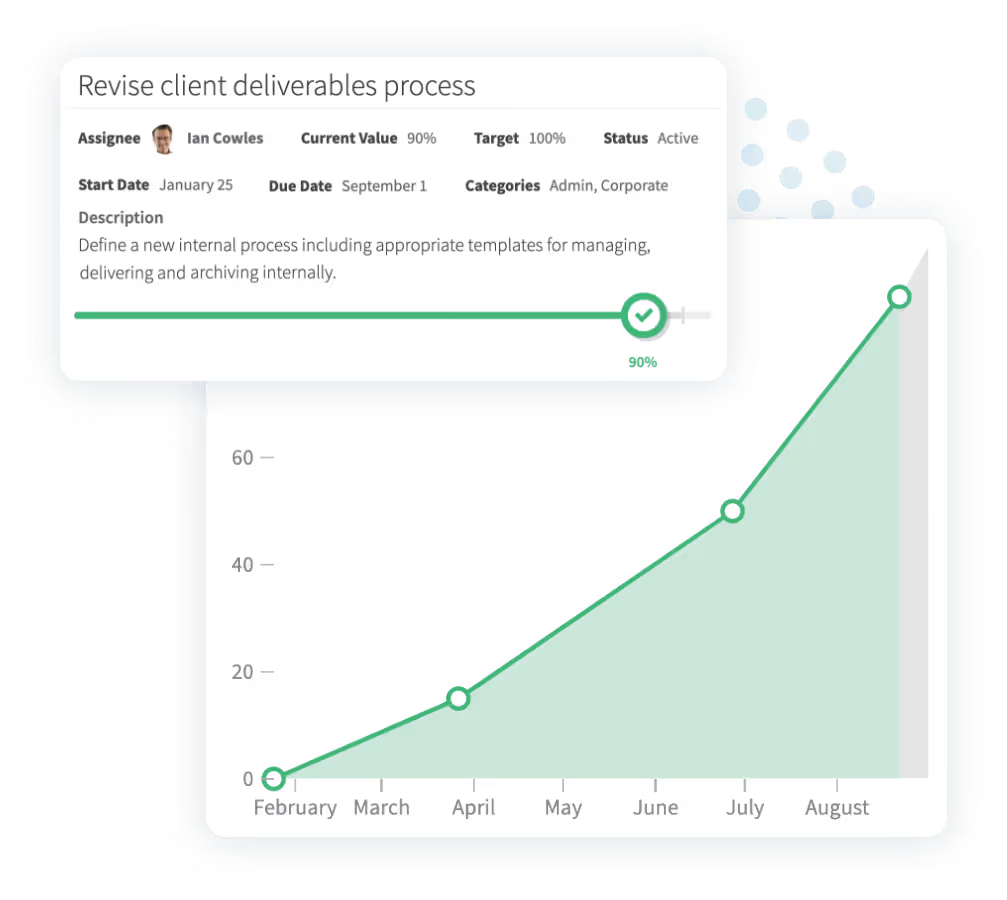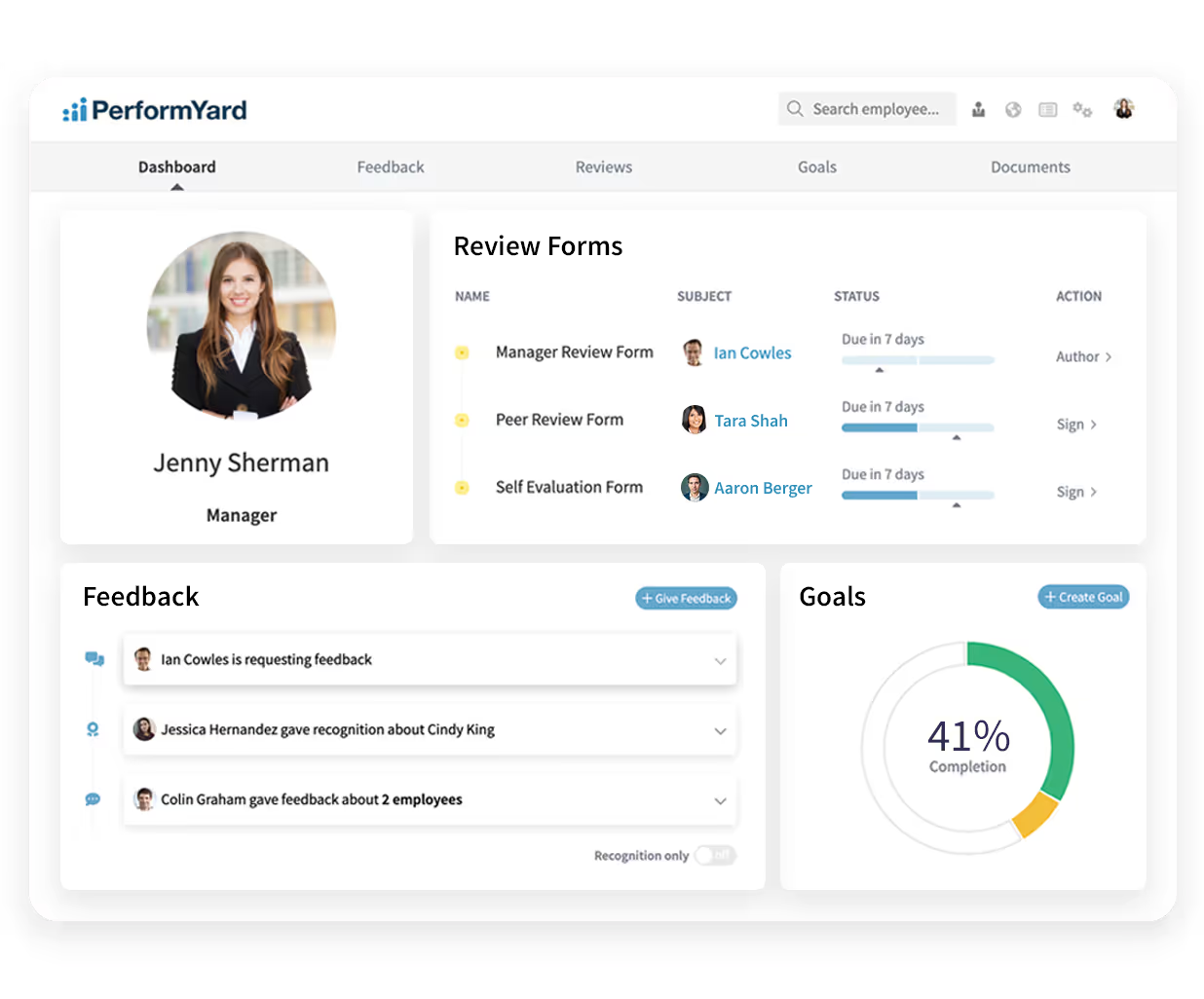2025 Guide to Developing a Growth Mindset Culture
Cutting-edge companies are putting less focus on hiring talent for experience, and more focus on hiring for potential. If you want to stay ahead of the curve and build a company that grows and evolves without having to chase after others’ ideas, you have to develop a culture with a growth mindset.
But what exactly does it mean to develop a growth mindset culture, and how can it positively impact your business?
This article outlines the benefits of developing a growth mindset culture and shows how to adjust your organization’s mindset to one of growth.
First, let’s dive into exactly what having a growth culture means.
What Is a Growth Mindset Culture?
Having a growth mindset means you don't believe your intelligence and abilities are static. Instead, you believe that you're capable of learning the skills you need to be successful.
This mindset goes hand-in-hand with positive thinking. A person with a growth mindset would believe that failure is an opportunity to grow. Instead of believing that failure is should be avoided at all costs, they try new things, even if they might not work out.
Developing a culture of growth mindset starts with beliefs at the individual level. It also requires you to encourage this mindset among your teams. A company culture that focuses on a growth mindset encourages continuous learning, improvement, and innovation. Employees aren’t afraid to share their ideas. They work through them with others because the environment supports collaboration.
What Is the Difference Between a Growth Mindset and a Fixed Mindset?
A growth mindset vs a fixed mindset is the difference between a person who believes their effort and attitude shape their abilities vs someone who thinks their potential is predetermined.
Someone with a growth mindset believes that they can use feedback to improve. They think they can do anything they set their mind to. Someone with a fixed mindset takes feedback personally. They see little reason to change because they are who they are.
People with a growth mindset help businesses grow and evolve. Those with a fixed mindset do what they were hired to do—no more and no less. They find it hard to evolve in their role because they prefer to do what they know they’re good at.
Benefits of a Growth Mindset Culture
For businesses that operate with a fixed mindset culture, it’s natural to focus on and reward star employees. However, it stifles innovation and breeds resentment among other employees whose talents and abilities aren’t being developed.
In contrast, a growth mindset culture comes with benefits that include:
- Improved trust
- Increased teamwork
- Boosts innovation
- Values employee abilities, not just pedigrees
- Treats failure as a learning and growing opportunity
- Diversified viewpoints and voices
Improved trust
Trust is important at work. It's hard to operate efficiently with a group of employees who don't trust their leaders. It becomes hard to make decisions, which stifles innovation and creates an atmosphere of second-guessing that encourages everyone to stay in their lane.
Those who work in a growth mindset culture are 47% more likely to say their colleagues are trustworthy. With a growth mindset culture, employees feel more engaged, confident in their abilities, and more willing to take risks because they trust their coworkers and supervisors who trust them in return.
Increased teamwork
A growth mindset culture naturally supports an atmosphere of teamwork. Employees aren’t afraid to share their ideas and take on potentially risky projects. It changes an "I can't do that" attitude into a "how can't we do that" attitude that makes it much easier for employees to work together. The result is that 34% of workers feel a strong sense of ownership and commitment to the company they work for.

Boosts innovation
Because employees aren’t afraid to take risks in a growth mindset culture, they are free to be more creative, and that creativity can lead to innovation. Obstacles are seen as opportunities, so they are more likely to be overcome. Curiosity takes center stage and innovative new ideas are not only thought up, but they are also achieved because employees are encouraged to work through them and see what happens.
Values employee abilities, not just pedigrees
A growth mindset culture looks to its employees as its most important asset, not because they have workers with degrees from the best universities or the most impressive experience, but because they believe in their employees’ abilities.
Instead of relying on their top employees to move the company forward, they rely on all of their employees to learn and evolve. It means new ideas can come from any level of the organization, and all employees have the opportunity to contribute in ways that make them feel fulfilled.
Treats failure as a learning and growing opportunity
Failure isn’t a cause for disappointment or fear in a growth mindset culture. Instead, it’s seen as a learning and growth opportunity. Those who work for this kind of organization are 65% more likely to say that it supports risk-taking on the job, with 49% saying that it fosters innovation because of this.
Not only are employees more comfortable at work because they aren’t afraid of the aftermath of failure, but it encourages them to try new things that lead to discoveries that can propel the company further.
Diversified viewpoints and voices
Coming up with innovative ideas means making sure your workforce is comfortable taking risks, not only because you’ll come up with new ideas, but because it will diversify the voices who come up with those ideas.
When you do a good job of demonstrating your commitment to a growth mindset culture, those employees who would normally keep quiet may suddenly have ideas to share. These ideas can be powerful because they often come from those with different life experiences, which can cause you to make changes you may not have considered before.
How to Develop a Growth Mindset Culture
So you’re sold on the benefits of developing a growth mindset culture, but exactly how do you create an environment that supports learning new things and taking risks?
There are six things your organization can do to make the transition to a business with a growth mindset:
- Foster a learning environment
- Promote and hire based on growth potential, as well as achievements
- Champion collaboration and teamwork
- Destigmatize failure and use it as a tool
- Raise diverse, underrepresented, and junior voices
- Build mentorship programs
Foster a learning environment
A growth mindset culture requires a workforce that is always learning and growing. That means you have to create opportunities for your employees to do just that.
It starts with formal changes, like hosting employee training programs and providing opportunities for professional development, but it also means incorporating more informal strategies. For example, if you support a culture of open communication, employees are more likely to support and collaborate, which can lead to learning. You might give employees free time on the clock to tinker with a passion project, or you might create a self-help library of learning resources.
Promote and hire based on growth potential, as well as achievements
Most workplaces promote and hire employees based on their previous achievements. That’s still a worthwhile strategy, but you should also promote and hire based on potential if you want to create a growth mindset culture.
You’re able to create a workforce that is always looking towards the future when you focus on growth potential. Not to mention, you show existing employees that you value their ability to learn and grow more than their previous experience, degree, or training, which encourages them to continue looking for ways to learn and grow.
Businesses with a growth mindset culture also tend to promote from within. Take a look at your existing workforce and see who could be groomed for a higher position instead of immediately looking for a brand new person to fill the role.
Champion collaboration and teamwork
Businesses that operate with a fixed mindset often work in silos on individual tasks. In contrast, growth mindset businesses champion collaboration and teamwork. Employees still have time to brainstorm and work independently, but they also come together to share ideas, come up with new solutions, and support each other.
360 reviews can be a great way to allow everyone to learn and grow from their peers. Team reviews can be helpful too, especially if you include achievements that were discovered or what everyone learned after working together on the latest project.
Destigmatize failure and use it as a tool
Taking risks at work can be scary, especially if employees worry that a mistake could cost them their jobs or they will miss out on a raise. It’s much easier to keep their head down and get their work done without stirring the pot. It’s your job to convince them that failure isn’t something to be scared of. Instead, it simply becomes part of the process that’s necessary to make discoveries.
Create a safe environment for risk-taking and reward those who are willing to take risks. It can also be helpful to define smart risks. When expectations are outlined and the parameters are clear, employees are more willing to try something new.
Raise diverse, underrepresented, and junior voices
There is strength in diversity, as those with different personal and professional experiences can sometimes have the most innovative ideas. You just have to make room for them to feel comfortable speaking up.
Singling someone out in the middle of a meeting isn’t the best way to get input. Instead, find more comfortable ways for your diverse, underrepresented, and most junior employees to speak up. For example, you might create an employee engagement survey to collect feedback. Employees can be segmented by cohort, which means you can see what your quietest employees are thinking without them feeling singled out.
Build mentorship programs
Encouraging collaboration and teamwork are great ways for employees to learn from each other, but you should take things one step further by building mentorship programs for your employees.
Start by choosing a goal and format for your program. For example, peer mentoring can be a great way to encourage employees to come up with new ideas, while group mentoring can be a great way to build camaraderie and learn new skills.
Mentorship programs can be as informal or as formal as you'd like, but it is important to match participants carefully. Allow them to have input into the process, and check in frequently to make sure that it’s providing value to all the participants who are involved.
Growth Mindset Activities
Creating a growth mindset culture starts with the big things, but the little things are just as important. That means incorporating growth mindset activities into your daily, weekly, and monthly schedule like:
- Encourage feedback
- Discuss and learn from failures
- Take on new challenges
- Set SMART goals
- Schedule team brainstorming sessions
- Reward new ideas and thinking
Encourage feedback
Feedback is something that should be supported in your workplace more than just once a year when an official performance review rolls around. Integrate real-time feedback that enables employees to see how they're doing as a project is in progress so they can learn, grow, and pivot in the moment.

It also means encouraging different kinds of feedback too. You might integrate upward performance appraisals that enable employees to provide feedback to their managers or project-based reviews that can help employees reflect on what they learned before starting the next project.
Discuss and learn from failures
In a growth mindset culture, failures aren’t punished. They aren’t swept under the rug and forgotten about either. They aren’t to be feared. Instead, they are used as a learning tool.
That means you have to make time to discuss failures so everyone has the opportunity to learn from them. Whether you’re talking one-on-one or you’re in a group setting, the key is to emphasize what was learned from the mistake and how it can positively impact future projects.
You can have a little bit more fun with failure at work. Try keeping a tally of failures and see if your team can beat the record, or send out a newsletter outlining failures that turned into whopping successes.
Take on new challenges
Encourage employees to step outside their comfort zone and take on new challenges. That might mean putting someone on a new team or encouraging an employee to take up a new task. Just make sure you provide them with plenty of support along the way so they feel more confident going up against a challenge that might make them feel uncomfortable.
Make sure management models take on new challenges too. The aim is to create a growth mindset culture where everyone feels like they’re part of a team that is always looking for ways to stretch outside their comfort zone.
Set SMART goals
One of the best ways to foster a growth mindset culture is to incorporate SMART goals into your review process.
SMART goals include five distinct features that are:
- Specific
- Measurable
- Achievable
- Relevant
- Time-constrained

Make the most of your SMART goals by creating specific goals for employees that encourage a growth mindset. A shy employee might have a goal to share at least one new idea at a team meeting, or a new employee could be encouraged to learn one new skill ahead of the next review.
Schedule team brainstorming sessions
Brainstorming sessions can be a great way to identify organizational problems and come up with ways to solve them, but you have to work these sessions into your schedule. Whether weekly, monthly, or quarterly, they can be a great way for the team to get together and bounce new ideas off each other.
Make sure that you get crystal clear about the topic you would like to brainstorm and give employees time to prepare ahead of time. It gives employees the ability to clarify their thoughts ahead of the meeting, and it ensures diverse ideas are generated based on a single theme that can be implemented.
Reward new ideas and thinking
Don’t just reward achievements and outcomes. You also have to make time to reward new ideas and thinking if you want to build a growth mindset culture.
Tangible rewards, like prizes and monetary rewards, are welcome among employees, but most employees are just happy to know that their ideas are making a difference. A heartfelt thank you and sharing how their thoughts are going to be implemented can encourage employees to continue coming up with innovative new ideas.
How Performance Management Can Encourage a Growth Mindset Culture
Performance management tools can provide the scaffold for creating a growth mindset culture, especially when you choose an all-encompassing platform that enables you to personalize your approach for your employees.

For example, PerformYard tools include a wide variety of review formats to choose from, like peer-to-peer 360 reviews and check-ins. You’re able to create engagement surveys and incorporate real-time feedback, and there are multiple ways for employees, managers, and HR to customize goals. Because it’s all located on a single platform, it’s easy for employees to participate in a dynamic process that enables them to learn and grow at your organization.
In Conclusion
Don’t let a fixed mindset hold your organization back. With a growth mindset culture, you can encourage your employees to share ideas and take risks that will help you stay ahead of the competition and propel your company forward into the future.


.jpg)

.jpg)
